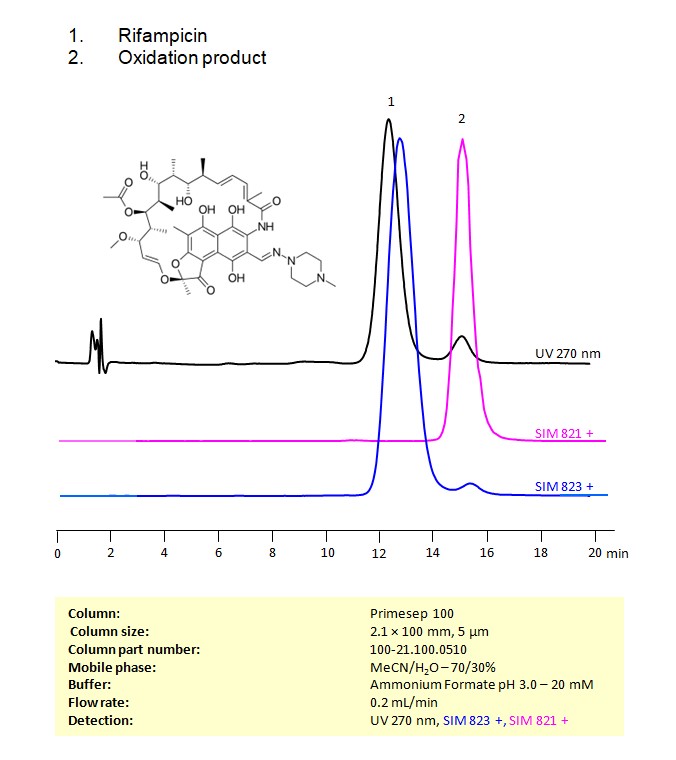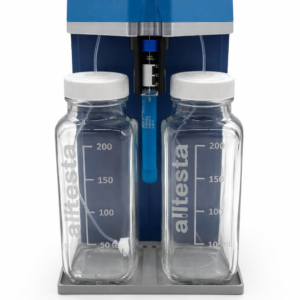HPLC Method for Analysis of Rifampicin on Primesep 100 by SIELC Technologies

High Performance Liquid Chromatography (HPLC) Method for Analysis of Rifampicin
Rifampicin is an important antibiotic used primarily in the treatment of tuberculosis. Let’s delve into both rifampicin and its metabolite, rifampicin quinone:
Rifampicin:
Mechanism of Action: Rifampicin inhibits bacterial DNA-dependent RNA polymerase, thereby preventing RNA synthesis and subsequent protein synthesis.
Uses: It’s mainly used for the treatment of tuberculosis, often in combination with other antitubercular agents. It can also be used to treat leprosy, and as prophylaxis for Neisseria meningitidis (meningococcal) infections.
Rifampicin can be retained, separated and analyzed on a Primesep 100 mixed-mode stationary phase column using an isocratic analytical method with a simple mobile phase of water, Acetonitrile (MeCN), and a ammonium format as a buffer. This analysis method can be detected using UV at 270 nm, an Evaporative Light Scattering Detector (ELSD), or any other evaporative detection method (CAD, ESI-MS)
| Column | Primesep 100, 2.1 x 100 mm, 5 µm, 100 A, dual ended |
| Mobile Phase | MeCN – 70%, |
| Buffer | Ammonium Formate pH 3.0-20 mM |
| Flow Rate | 0.2 ml/min |
| Detection | UV, 270 nm, SIM 823 +, SIM 821 + |
| Spray Voltage: | 1.5 kV |
| Nebulizing gas: | 1.5 L/min |
| Drying gas: | 15 L/min |
| DL temp: | 250 ˚C |
| Heat Block: | 400 ˚C |
| Class of Compounds | Drug, antibyotics |
| Analyzing Compounds | Rifampicin |
Application Column
Primesep 100
Column Diameter: 2.1 mm
Column Length: 100 mm
Particle Size: 5 µm
Pore Size: 100 A
Column options: dual ended





